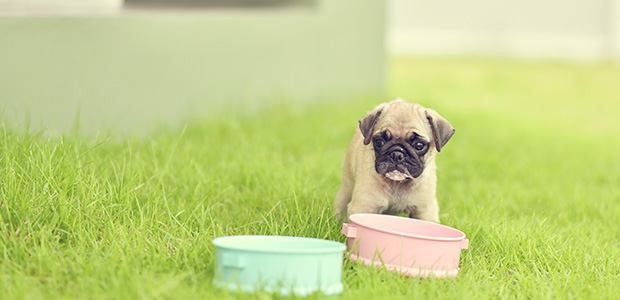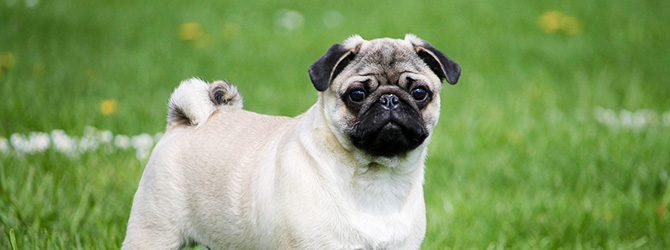The Pug: thinking of getting a Pug?
First Published: 18/12/2019
Last Updated: 17/10/2023
Pugs are typically sociable, easy-going and full of character. Their modest exercise needs make them great companions for city dwellers or those who live in flats/apartments.
Let’s take a closer look at the Pug.
Place of origin: 16th Century China
How big do Pugs get? 25 – 30cm
How heavy are Pugs? 6 – 8kg
Pug Life Expectancy: 12 – 15 years
Colour: Black, Fawn, Apricot, Silver Fawn
Please note: a dog’s exercise, training/stimulation and grooming requirements can depend on several factors such as age and health. The same goes for ongoing costs of ownership. For advice on one specific dog, we always advise chatting with a vet.
How much exercise does a Pug need?
Pugs are comparatively easy-going when it comes to exercise. Your Pug will need 2 mid-length walks a day and don’t mind being kept on the lead – making them great canine companions for owners that don’t have easy access to huge open fields.
Pugs are small and tend not to roam very much, so they’re well suited to life in a flat, apartment or modest living space.
Although they don’t need as much exercise as larger dogs, Pugs are candidates for obesity so maintaining their daily exercise routine is very important.
Training: how to train a Pug
As strong-minded creatures, Pugs aren’t always the easiest dogs to train. Aim to start their obedience training early on and always use positive reinforcement.
On the plus side, Pugs adore companionship and generally love to please their owners. With plenty of patience and consistency, there’s no reason your Pug can’t become a perfectly house-trained, well-socialised companion.

Grooming: do Pugs shed?
A Pug’s coat is easy enough to look after. Regular brushing will keep their fur in tip-top condition. Try bathing them every month or so too – they may even fit in your sink.
Pugs are notorious moulters so you might find yourself vacuuming a few times a week to keep your carpet and furniture fur-free. If you’re particularly house-proud or you hate housework, a Pug may not be the best choice for you.
On the topic of grooming, make sure to keep the folds of skin around your Pug’s mouth nice and clean and dry. As with most breeds, a Pug will benefit from regular tooth brushing, nail clips and ear checks.
Pug temperament, socialising and ideal home environment
On the whole, Pugs are easy-going companions, full of character and loyal to their owners. Their personality may differ depending on their background and other factors, but this is the case for most breeds.
Even though they’re small, Pugs are more robust than they appear, making them good companions for children.
If you live in a flat/apartment or urban area where you can’t easily access open areas, a Pug may be the perfect breed for you!
Cost of owning a Pug
When considering the lifetime cost of owning a pug, remember to take into account:
- Breed-specific food
- Veterinary care
- Pet insurance
- Kennels or dog sitters
- Grooming costs
- Toys and equipment
As brachycephalic dogs, Pugs are on average more susceptible to a range of health problems than other breeds. In particular, they may require surgery to open up their airways and improve their breathing. For more information on brachycephalic breeds, contact your vet.
Read more: Canine brachycephaly: breathing problems in brachycephalic dogs.
Need more info?
For more info on finding the best dog breed for you and your lifestyle, have a chat with your vet.
Find your nearest vet using our Find a Vet page, or speak to a vet online using Online Vets.
